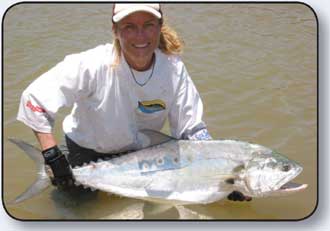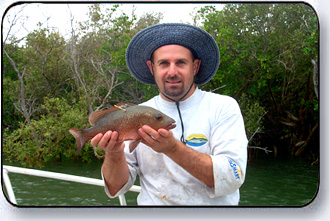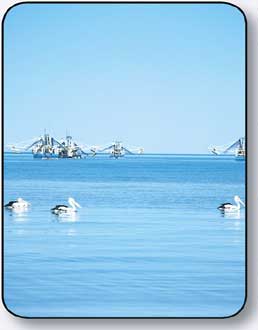|
|
 |
|
The Campaign - Fisheries
What will happen to our Fisheries?
The prawn fishery is known to be dependent on juvenile recruitment from the shallow seagrass and algal beds on the eastern side of the gulf. Regular pulses of nutrients enrich these seagrass beds following outflows from the hinterland after cyclonic rainfall, or heavy winter rains. Studies of these seagrass beds following the devastating impacts of cyclone Vance in March 1999, demonstrated the reliance of these nursery areas on terrestrial nutrient run-off. MG Kailis' Giant Prawn announcing to all Exmouth visitors the the nature of their business
The Exmouth region also is home to a pearl oyster fishery and grow-out industry and an established recreational sports-fishery. Both fishing and aquaculture are highly dependent on the maintenance of high water quality and the natural ecological processes which drive marine productivity. All these activities will be threatened by the proposed Yannarie Salt Project The production and transfer of juvenile pearl oyster to important pearl farm areas in the Kimberley is dependent on freedom from exotic disease and pests. The presence of large bulk carriers from high risk areas puts the disease-free status of stock from what the government has declared an 'icon' industry in WA at definite risk.
Both commercial and recreational fisheries will potentially see a reduction in recruitment as a consequence of changes to habitat structure and foodwebs resulting from the construction of the solar salt complex. Vast numbers of larvae and juveniles will also be directly removed from the nursery habitat by the intake pumps.
Releasing a queenfish
The presence of an industrial port and shipping operation may also result in the exclusion of both commercial and recreational fishers from important fishing areas.
|

![]()

![]()

Halt the Salt Campaign - Web Manager:
Dave Graham, Web hosting: ozup.com
Images copyright Wags and
Kelly
Halt the Salt Privacy statement
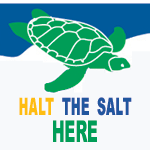
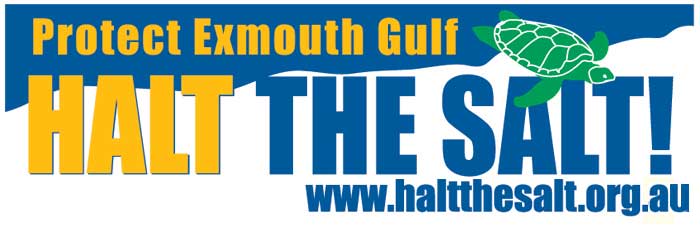
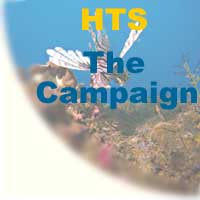
 Exmouth
Gulf supports a long-standing sustainable prawn trawl fishery which
provides Exmouth king prawns to the Perth market. The 16 licences
in the fishery harvest on average 1000 tonnes of the succulent delicacy
every year, providing employment for over 100 people and producing
some $15 million of income.
Exmouth
Gulf supports a long-standing sustainable prawn trawl fishery which
provides Exmouth king prawns to the Perth market. The 16 licences
in the fishery harvest on average 1000 tonnes of the succulent delicacy
every year, providing employment for over 100 people and producing
some $15 million of income.  The
fishery is closely monitored by WA Fisheries research staff and
is managed cooperatively by Fisheries Department and industry based
on real-time information supplied by world's leading technology.
The fishery is often quoted as the "Best-Managed" Prawn
Fishery in the world
The
fishery is closely monitored by WA Fisheries research staff and
is managed cooperatively by Fisheries Department and industry based
on real-time information supplied by world's leading technology.
The fishery is often quoted as the "Best-Managed" Prawn
Fishery in the world 